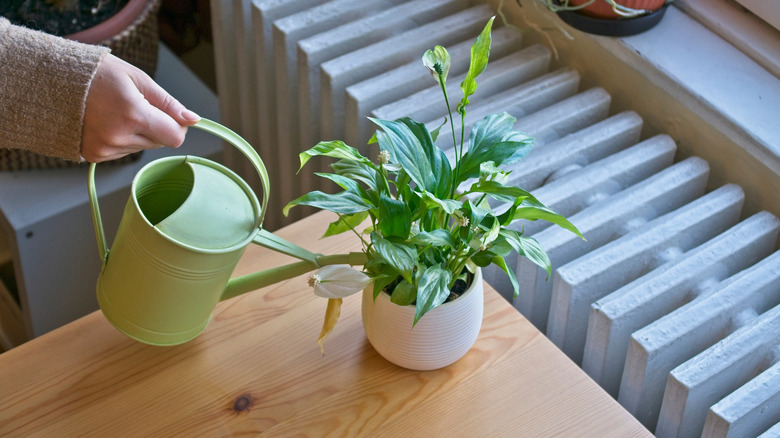What To Do If Your Peace Lily Is Drying Out Between Waterings
Who doesn't love a beautiful peace lily (Spathiphyllum) as part of a collection of indoor potted plants? They typically thrive indoors. Of course, if it seems that every time you turn around, your peace lily is dried out and thirsty, then you might need to take action. This could be a sign that your plant has gotten cramped and needs to be replanted into a larger container.
You can count many benefits of growing peace lilies, including that they're no-fuss, fairly easy to grow houseplants that offer up pretty white blooms. They also love the shade, so you don't even need a sunny spot by the window to grow them. Save that coveted space for some of your sun-loving plants. Plus, this relative in the Araceae family grows to be about 3 feet tall, so it takes up space when healthy.
It's a good idea to repot this dependable bloomer if you start to see some telltale signs that it's getting crunched. This happens every couple of years or so. Look for roots at the surface of the soil or a plant that's getting too oversized for its base. A pot that gets dry quickly between waterings in these cases means your peace lily needs more room to grow. More evidence that this is the case is when the soil gets crusty and dry on top — maybe even so hard it can't absorb water well. Your peace lily's roots are taking up as much water as they can, but they need more soil to spread out in. When replanted into a larger pot, there is more soil to hold more water, eliminating the tendency to dry out too fast.
How to repot a peace lily
When it comes to repotting your peace lily, pick a container that's just slightly bigger than your current one by about 2 inches in diameter. The most important step might be to remember to water the lily an hour or two before you want to repot it. This will make the root ball looser and easier to transfer from one pot to another. Just be sure to line the bottom of the new planter with some well-draining potting soil.
When placing your plant into a new pot, always make sure the root ball sits about an inch from the rim, or roughly the same height it enjoyed in the old container. You don't want the root ball to sit deeper in the new pot because the crown of the plant may rot if buried. If you don't want to mess with soil at all, then you can go without. There's a simple no-soil method for growing beautiful peace lilies, where you can grow them using just water.
If you find that the soil in the new pot also gets dry between regular waterings, then know you may need to rethink your watering schedule or the type of potting soil you use. Some mixes are better at retaining water than others. You can also try to keep potted plants from drying out with a budget-friendly solution you can DIY.

